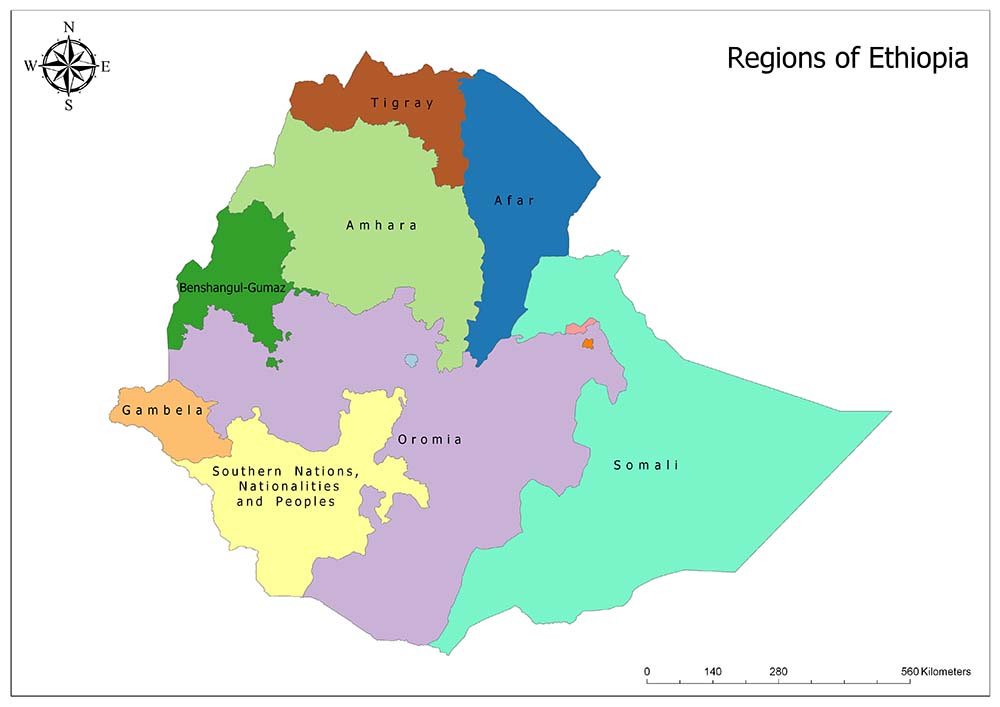The devastating civil war in northern Ethiopia has resulted in an estimated 600,000 non-combatant fatalities, according to an Nyssen, a geographer at Ghent University in Belgium. This harrowing period of strife, referred to as the Tigrayan War, extended from November 2020 to November 2022, precipitating an immense number of fatalities, many of whom perished from starvation due to enforced blockades and resource scarcity. The total mortality including casualties among combatants could total a staggering one million people.
Prime Minister Abiy Ahmed the individual once regarded as Africa’s parallel to Barack Obama, has seemingly steered Ethiopia towards disaster steam towards internal conflict. The quest to centralize power by the federal government, coupled with his vilification of Tigrayans during the conflict, labelling them as ‘monsters’ and vowing to “bury this enemy with our blood and bones ” have exacerbated the crisis during the time when federal government was supposed to find solutions of peace for all Ethiopians.

According to Ethiopia’s constitution, regional states are authorized to establish and maintain their own police forces for the purpose of peacekeeping and law enforcement. However, in the period from 2020 to the present, regional states have taken these provisions further, constructing powerful security services and local militias. Throughout the conflict, various Ethiopian regions established regional militia forces, with the Fano militia in the Amhara region standing as a notable example. Over the course of the two-year conflict with the Tigray region, the Fano militia fought closely alongside the Ethiopian federal army, the ENDF.
The Tigray war unfolded through a series of pivotal events. It initiated with the occupation of Tigray in November 2020, proceeded by the Tigray Defence Forces reclaiming Mekelle in June 2021. The TPLF then advanced towards Addis Ababa, a significant phase that lasted from August to November 2021, but were swiftly compelled to retreat to Mekelle within the same month. The war took its final twist in April 2022, when the Eritreans, the ENDF, and Amhara militias launched a conclusive assault. This tumultuous timeline drew to a close with the cessation of hostilities in November 2022.
In November 2022 the signing of the Pretoria Deal mediated by the African Union (AU) in South Africa, marked the cessation of hostilities between the Ethiopian federal government and the Tigray region. However, Ethiopia continues to face significant post-war challenges. The regions of Amhara, Oromia, and Tigray remain on high alert, harboring deep distrust towards each other. Perceiving each other as security threats, these regions insist on deploying their own security forces as a protective measure, underlining a deep-seated mistrust in the reliability of the federal government’s security provision. The federal government’s initiative to establish a robust, centralized army met significant resistance, particularly in the Amhara and Oromia regions of Ethiopia. The Ethiopian federal government’s decision on April 6, 2023, to dismantle the special forces (paramilitary units) of all regional governments and reintegrate them into the national defense force, the federal police, or the respective regional police sparked widespread protests in the Amhara Region.

Since April 2023, sections of the Amhara region have been engulfed in continuing deadly unrest, with the Ethiopian federal government cracking down on civilians and self-defense groups in the nation’s second-most populous region. One of the most significant challenges emerges from the Amhara region. A violent attack on a convoy carrying the Head of Ethiopia’s ruling Prosperity Party (PP) in the Amhara region, Girma Yeshitila, resulted in five fatalities, as reported in a statement issued by the Amhara regional state administration. Girma Yeshitila suffered fatal gunshot wounds in the Guasa area of the North Shoa zone of the Amhara region.

On April 27, 2023, Ethiopia’s Prime Minister Abiy implicated unspecified entities in Girma’s assassination, alleging they resorted to violence after failing to prevail in the “battle of ideas.” Major sections of the Amhara region, Ethiopia’s second most populous area, are currently experiencing an informal communication and information blockade enforced by the Ethiopian government. In a rare statement issued on August 2nd 2023, the Ethiopian National Defense Force (ENDF) acknowledged taking action against entities they accuse of destabilizing the country under the banner of “Fano.” Simultaneously, the turmoil has seen the assassination of scores of Ethiopian government officials, spanning from low-level to high-level ranks, by unidentified assailants.
The question of how the Ethiopian federal government will address the ongoing issues in the Amhara region remains unresolved. The Prime Minister’s pursuit of centralizing power has left Ethiopia beleaguered by war and famine from 2020 to 2022. If the federal government opts for a similar approach in the Amhara region to what was executed in Tigray, Ethiopia might find itself fracturing from within.

